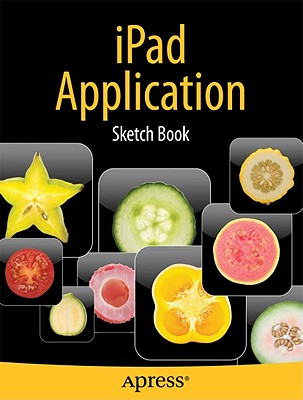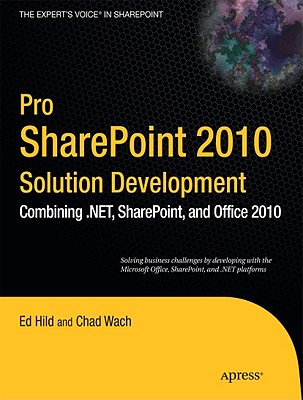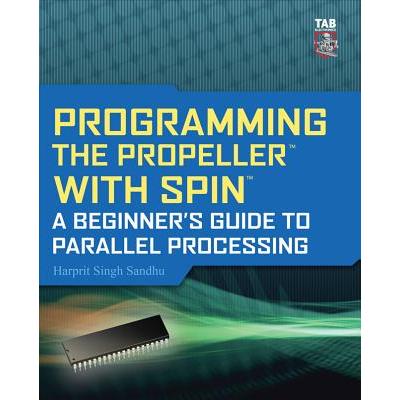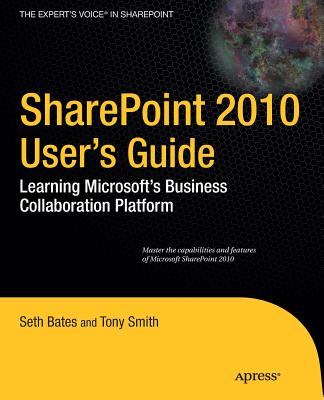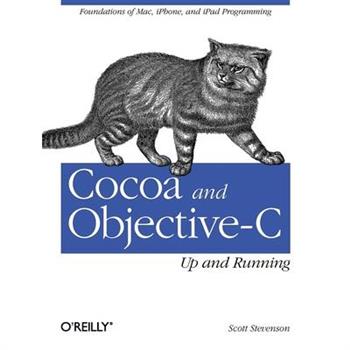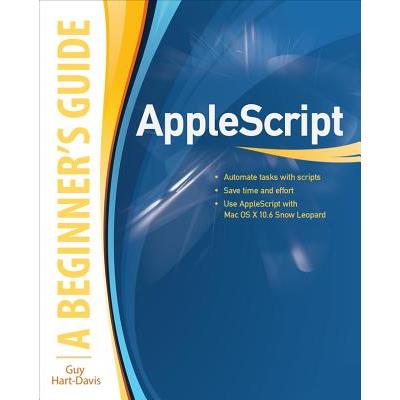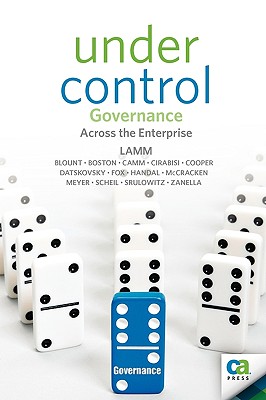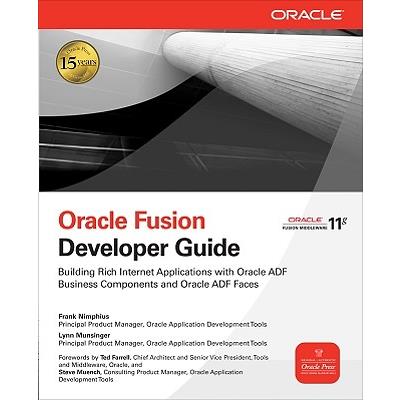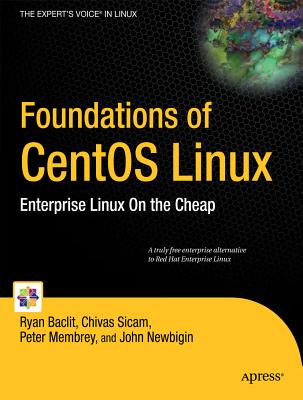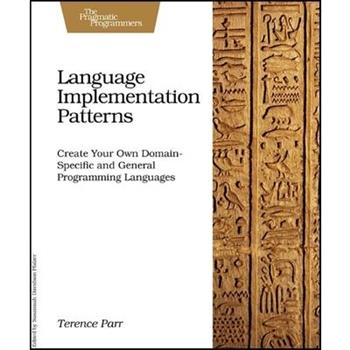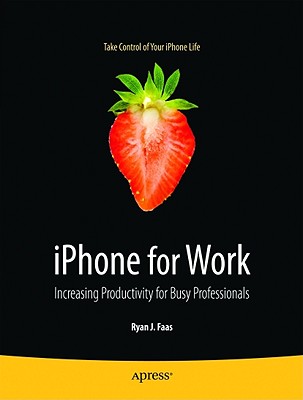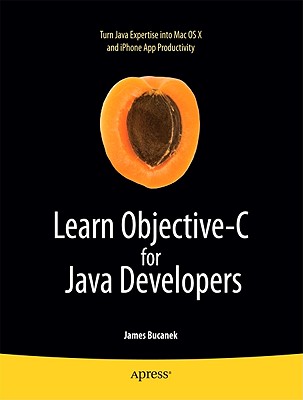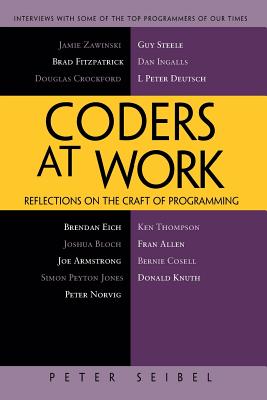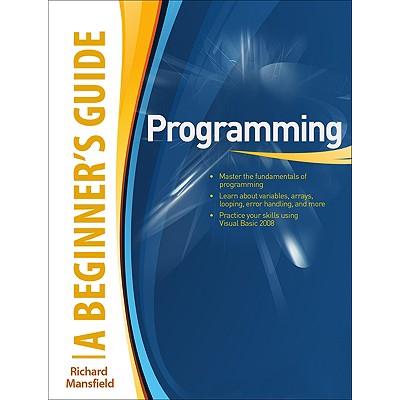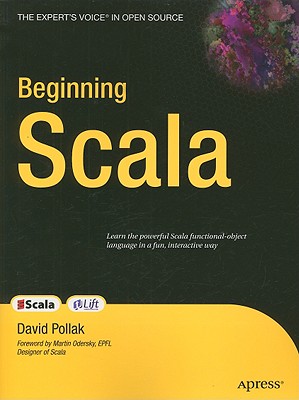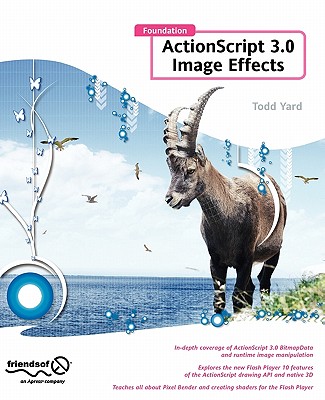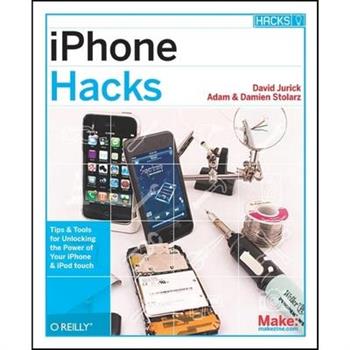Ipad Application Sketch Book
Think you have the next great iPad app idea? The iPad Application Sketch Book is an essential tool for any aspiring iPad developer. This sketch book makes it easy to centralize and organize your ideas, featuring full-sized iPad templates to write on. Professionally printed on high-quality paper, it has a total of 150 gridded templates for you to draft ideas and doodle designs while providing ample room to make notes, and document the app name and screen name. Its flat binding and perforated pages make it ideally flexible for any use you might think of. This book is a must-have and an invaluable tool for bringing your next great iPad app idea to life!
Tapworthy
So you've got an idea for an iPhone app -- along with everyone else on the planet. Set your app apart with elegant design, efficient usability, and a healthy dose of personality. This accessible, well-written guide shows you how to design exceptional user experiences for the iPhone and iPod Touch through practical principles and a rich collection of visual examples. Whether you're a designer, programmer, manager, or marketer, Tapworthy teaches you to "think iPhone" and helps you ask the right questions -- and get the right answers -- throughout the design process. You'll explore how considerations of design, psychology, culture, ergonomics, and usability combine to create a tapworthy app. Along the way, you'll get behind-the-scenes insights from the designers of apps like Facebook, USA Today, Twitterrific, and many others. Develop your ideas from initial concept to finished design Build an effortless user experience that rewards every tap Explore the secrets of designing for touch Discover how and why people really use iPhone apps Learn to use iPhone controls the Apple way Create your own personality-packed visuals
Pro SharePoint 2010 Solution Development
This book takes a practical problem-solution approach to common business challenges. You'll not only encounter interesting code samples, but also see how to combine these examples with the Microsoft collaboration platform's services. The book's solutions focus on using Visual Studio 2008 and its built-in Office development tools to construct the user interface layer. And solutions can interact with SharePoint as a service provider, taking advantage of SharePoint's many collaboration features like document repositories, collaboration sites, and search functions. This book is unique because it starts with challenges that end users deal with every day when using the Microsoft collaboration platform to support business processes. The solutions are presented as hypothetical business challenges of a fictional company. By presenting the examples in this context, author Ed Hild makes it easier to relate to the challenges and solution value. The goal of these examples is to build applications that apply the benefits of the Office desktop interface to the richness of SharePoint collaboration features. This book will help you develop real-world solutions to complex business problems and challenges.
Programming the Propeller With Spin
Publisher's Note: Products purchased from Third Party sellers are not guaranteed by the publisher for quality, authenticity, or access to any online entitlements included with the product.Parallel Processing With the Propeller--Made Easy!"This book should find a place on any Propellerhead's bookshelf, between Parallax's Propeller Manual and its Programming and Customizing the Multicore Propeller volumes." Make: 24Programming the Propeller with Spin: A Beginner's Guide to Parallel Processing walks you through the essential skills you need to build and control devices using the Propeller chip and its parallel processing environment. Find out how to use each of the identical 32-bit processors, known as cogs, and make the eight cogs effectively interact with each other. The book covers Propeller hardware and software setup, memory, and the Spin language. Step-by-step projects give you hands-on experience as you learn how to: Use Propeller I/O techniques with extensive Spin code examplesDisplay numbers with seven segment displaysCreate accurate, controlled pulse sequencesAdd a 16 character by two line LCO displayControl R/C hobby servosUse motor amplifiers to control small motorsRun a bipolar stepper motorBuild a gravity sensor-based auto-leveling tableRun DC motors with incremental encodersRun small AC motorsYou'll also find hundreds of lines of ready-to-run documented Spin code as well as PDFs of all the schematics on McGraw-Hill's website: Downloads available at www.mhprofessional.com/computingdownload"This book should find a place on any Propellerhead's bookshelf, between Parallax's Propeller Manual and its Programming and Customizing the Multicore Propeller volumes." Make: 24
Hackers
This 25th anniversary edition of Steven Levy's classic book traces the exploits of the computer revolution's original hackers -- those brilliant and eccentric nerds from the late 1950s through the early '80s who took risks, bent the rules, and pushed the world in a radical new direction. With updated material from noteworthy hackers such as Bill Gates, Mark Zuckerberg, Richard Stallman, and Steve Wozniak, Hackers is a fascinating story that begins in early computer research labs and leads to the first home computers. Levy profiles the imaginative brainiacs who found clever and unorthodox solutions to computer engineering problems. They had a shared sense of values, known as "the hacker ethic," that still thrives today. Hackers captures a seminal period in recent history when underground activities blazed a trail for today's digital world, from MIT students finagling access to clunky computer-card machines to the DIY culture that spawned the Altair and the Apple II.
SharePoint 2010 User's Guide
Microsoft SharePoint Foundation 2010 and SharePoint Server 2010 provide a collection of tools and services you can use to improve user and team productivity, make information sharing more effective, and facilitate business decision-making processes. In order to get the most out of SharePoint 2010, you need to understand how to best use the capabilities to support your information management, collaboration, and business process management needs. This book is designed to provide you with the information you need to effectively use these tools. Whether you are using SharePoint as an intranet or business solution platform, you will learn how to use the resources (such as lists, libraries, and sites) and services (such as publishing, workflow, and policies) that make up these environments. Information and process owners will be given the knowledge they need to build and manage solutions. Information and process consumers will be given the knowledge they need to effectively use SharePoint resources. In this book, Seth Bates and Tony Smith walk you through the components and capabilities that make up a SharePoint 2010 environment. Their expertise shines as they provide step-by-step instructions for using and managing these elements, as well as recommendations for how to best leverage them. As a reader, you'll then embrace two common SharePoint uses, document management and project information management, and walk through creating samples of these solutions, understanding the challenges these solutions are designed to address and the benefits they can provide. The authors have brought together this information based on their extensive experience working with these tools and with business users who effectively leverage these technologies within their organizations. These experiences were incorporated into the writing of this book to make it easy for you to gain the knowledge you need to make the most of theproduct.
Cocoa and Objective-C: Up and Running
Build solid applications for Mac OS X, iPhone, and iPod Touch, regardless of whether you have basic programming skills or years of programming experience. With this book, you'll learn how to use Apple's Cocoa framework and the Objective-C language through step-by-step tutorials, hands-on exercises, clear examples, and sound advice from a Cocoa expert. Cocoa and Objective-C: Up and Running offers just enough theory to ground you, then shows you how to use Apple's rapid development tools -- Xcode and Interface Builder -- to develop Cocoa applications, manage user interaction, create great UIs, and more. You'll quickly gain the experience you need to develop sophisticated Apple software, whether you're somewhat new to programming or just new to this platform. Get a quick hands-on tour of basic programming skills with the C language Learn how to use Interface Builder to quickly design and prototype your application's user interface Start using Objective-C by creating objects and learning memory management Learn about the Model-View-Controller (MVC) method of sharing data between objects Understand the Foundation value classes, Cocoa's robust API for storing common data types Become familiar with Apple's graphics frameworks, and learn how to make custom views with AppKit
Flexible, Reliable Software
Flexible, Reliable Software: Using Patterns and Agile Development guides students through the software development process. By describing practical stories, explaining the design and programming process in detail, and using projects as a learning context, the text helps readers understand why a given technique is required and why techniques must be combined to overcome the challenges facing software developers.The presentation is pedagogically organized as a realistic development story in which customer requests require introducing new techniques to combat ever-increasing software complexity. After an overview and introduction of basic terminology, the book presents the core practices, concepts, tools, and analytic skills for designing flexible and reliable software, including test-driven development, refactoring, design patterns, test doubles, and responsibility driven and compositional design. It then provides a collection of design patterns leading to a thorough discussion of frameworks, exemplified by a graphical user interface frramework (MiniDraw). The author also discusses the important topics of configuration management and systematic testing. In the last chapter, projects lead students to design and implement their own frameworks, resulting in a reliable and usable implementation of a large and complex software system complete with a graphical user interface.This text teaches how to design, program, and maintain flexible and reliable software. Installation guides, source code for the examples, exercises, and projects can be found on the author's website.
Learn AppleScript
AppleScript is an English-like, easy-to-understand scripting language built into every Mac. AppleScript can automate hundreds of AppleScript-able applications, performing tasks both large and small, complex and simple. Learn AppleScript: The Comprehensive Guide to Scripting and Automation on Mac OS X, Third Edition has been completely updated for Mac OS X Snow Leopard. It's all here, with an emphasis on practical information that will help you solve any automation problem--from the most mundane repetitive tasks to highly integrated workflows of complex systems. Friendly enough for beginners, detailed enough for advanced AppleScripters Includes major contributions from expert AppleScripters: Emmanuel Levy, Harald Monihart, Ian Piper, Shane Stanley, Barry Wainwright, Craig Williams, and foreword by AppleScript inventor, William Cook
Hackers & Painters
"The computer world is like an intellectual Wild West, in which you can shoot anyone you wish with your ideas, if you're willing to risk the consequences. " --from Hackers & Painters: Big Ideas from the Computer Age, by Paul Graham We are living in the computer age, in a world increasingly designed and engineered by computer programmers and software designers, by people who call themselves hackers. Who are these people, what motivates them, and why should you care? Consider these facts: Everything around us is turning into computers. Your typewriter is gone, replaced by a computer. Your phone has turned into a computer. So has your camera. Soon your TV will. Your car was not only designed on computers, but has more processing power in it than a room-sized mainframe did in 1970. Letters, encyclopedias, newspapers, and even your local store are being replaced by the Internet. Hackers & Painters: Big Ideas from the Computer Age, by Paul Graham, explains this world and the motivations of the people who occupy it. In clear, thoughtful prose that draws on illuminating historical examples, Graham takes readers on an unflinching exploration into what he calls "an intellectual Wild West." The ideas discussed in this book will have a powerful and lasting impact on how we think, how we work, how we develop technology, and how we live. Topics include the importance of beauty in software design, how to make wealth, heresy and free speech, the programming language renaissance, the open-source movement, digital design, internet startups, and more.
Microsoft Visual Studio 2010: A Beginner’s Guide
Publisher's Note: Products purchased from Third Party sellers are not guaranteed by the publisher for quality, authenticity, or access to any online entitlements included with the product.Essential Skills--Made Easy!Written by a Microsoft MVP and Visual Studio expert, this hands-on guide gets you started with the latest release of Microsoft's flagship Integrated Development Environment (IDE). Microsoft Visual Studio 2010: A Beginner's Guide shows you how to build applications from the ground up, covering C#, VB.NET, ASP.NET, Silverlight, Windows Presentation Foundation (WPF), and Windows Communication Foundation (WCF). You'll also learn how to customize the IDE, adding your own tools that integrate with Visual Studio 2010, and edit and debug your applications.Designed for Easy LearningKey Skills & Concepts--Chapter-opening lists of specific skills covered in the chapterNotes--Extra information related to the topic being covered Tips--Helpful reminders or alternate ways of doing thingsAnnotated Syntax--Example code with commentary that describes the programming techniques being illustratedJoe Mayo is an independent consultant, specializing in Microsoft.NET tecnnologies. He is the author of LINQ Programming and other books. Joe is also the recipient of multiple Microsoft MVP awards.
Linq to Objects Using C# 4.0
"For several years, Troy has been one of the key figures in the LINQ community. This comprehensive and well-written book serves as a compendium of the important wisdom and experience that he has accumulated through his years of studying LINQ and its uses." -Charlie Calvert, Microsoft C# Community Program Manager "LINQ is changing the way we think about working with data and, in many ways, also about programming in general. LINQ to Objects Using C# 4.0 is a thorough reference that teaches how to simplify many day-to-day tasks with data. It also gives you the foundations that are necessary to understand a wide range of fascinating applications of LINQ that will, no doubt, continue to appear over the next few years." -Tomas Petricek, Microsoft MVP and author of Real-World Functional Programming Your Complete Example-Rich Guide to Using and Extending LINQ to Objects and PLINQ Using LINQ to Objects, .NET developers can write queries over object collections with the same deep functionality that was once available only with SQL and relational databases. Now, for the first time, developers have a comprehensive and authoritative guide to applying LINQ to Objects in real-world software. Microsoft MVP Troy Magennis introduces state-of-the-art techniques for working with in-memory collections more elegantly and efficiently--and writing code that is exceptionally powerful, robust, and flexible. Drawing on his unsurpassed experience coding software using LINQ and hosting the popular HookedOnLINQ.com site, Magennis presents timely, realistic solutions to a wide spectrum of development challenges, such as combining data from multiple sources, and achieving optimal performance with extremely large sets of data. You'll begin with brief quick-starts that walk you through LINQ to Objects' key features and query syntax. Next, you'll drill down to detailed techniques for applying and extending these features with C# 4.0 and C# 3.0--including code examples that reflect the realities of production development. Coverage includes - Writing basic LINQ queries with C#: filtering, projecting, and sorting data from in-memory collections - Mastering advanced techniques for grouping and joining data and understanding the performance implications of each technique - Taking full advantage of LINQ's standard query operators - Creating custom query operators that follow best practices for coding patterns and error handling - Writing more fluent, readable LINQ queries with C# 4.0's language enhancements, including the new dynamic features - Combining LINQ with COM-Interop to access data sources such as Microsoft Excel - Using Parallel LINQ to Objects (PLINQ) to optimize queries for multi-core processors, and how to build custom parallel query operators - Integrating the best LINQ to Objects patterns into your day-to-day coding
Plug-In Php: 100 Power Solutions
Publisher's Note: Products purchased from Third Party sellers are not guaranteed by the publisher for quality, authenticity, or access to any online entitlements included with the product.100 power solutions to real-world problemsThis practical guide gives you 100 ready-to-run PHP functions for solving most of the main problems you encounter when building a dynamic website with PHP. Every plug-in in the book offers a complete and working solution for a result you can achieve right away, using ready-made code you simply drop into your own program. And there's little or no learning curve, because each one is self-contained and thoroughly documented.Plug-in PHP is packed with programming tips and suggestions for further adapting the functions to your own needs, and even breaks down all the variables, arrays and functions used by each into at-a-glance tables, accompanied by a screen grab of every function in action. This makes the book extremely easy to use, even for complete beginners to PHP programming.A plug-in for every needNo matter what cookbook-style solutions you're looking for, you'll find the perfect functions in this book, and you can have them up and running in just a couple of minutes. For example, here's the complete list of plug-ins which, while comprehensive, simply doesn't do justice to the depth and breadth of help, information, and practical code provided in this book: Wrap Text; Caps Control; Friendly Text; Strip Whitespace; Word Selector; Count Tail; Text Truncate; Spell Check; Remove Accents; Shorten Text; Upload File; Resize Image; Make Thumbnail; Image Alter; Image Crop; Image Enlarge; Image Display; Image Convert; GIF Text; Image Watermark; Relative to Absolute URL; Get Links from URL; Check Links; Directory List; Query Highlight; Rolling Copyright; Embed YouTube Video; Create List; Hit Counter; Referer Log; Evaluate Expression; Validate Credit Card; Create Captcha; Check Captcha; Validate Text; Validate E-mail; Spam Catch; Send E-mail; BB Code; Pound Code; Check Links; Get Title from URL; Auto Back Links; Create Short URL; Use Short URL; Simple Web Proxy; Page Updated?; HTML to RSS; RSS to HTML; HTML to Mobile; Users Online; Post to Guestbook; Get Guestbook; Post to Chat; View Chat; Send Tweet; Send Direct Tweet; Get Tweets; Replace Smileys; Replace SMS Talk; Add User to DB; Get User from DB; Verify User in DB; Sanitize String; Create Session; Open Session; Close Session; Secure Session; Manage Cookie; Block User by Cookie; Create Google Chart; Curl Get Contents; Fetch Wiki Page; Fetch Flickr Stream; Get Yahoo! Answers; Search Yahoo!; Get Yahoo! Stock News; Get Yahoo! News; Search Google Books; Convert Currency; Ajax Request; Post Ajax Request; Get Ajax Request; Protect E-mail; Toggle Text; Status Message; Slide Show; Input Prompt; Words from Root; Predict Word; Get Country by IP; Bypass Captcha; Get Book from ISBN; Get Amazon Sales Rank; Pattern Match Word; Suggest Spelling; Google Translate; Corner GIF; Rounded Table; Display Bing MapReal world solutionsPlug-in PHP has everything you need for processing text; image uploading and manipulation; content management; forms and user input; integrating your website with others; creating chat and messaging services; using MySQL; managing sessions and cookies; dealing with APIs; RSS; and XML; integrating with JavaScript and Ajax; accessing geo-location; spell checking and language translation; and a great deal more.Written by PHP expert with many years of experience developing websites in PHP and writing about PHP development, this invaluable resource draws on the author's personal toolkit of solutions built up over the years. This means they are fast, tried-and-tested functions that have been proven to work in the real world, and they will work for you too.
97 Things Every Programmer Should Know
Tap into the wisdom of experts to learn what every programmer should know, no matter what language you use. With the 97 short and extremely useful tips for programmers in this book, you'll expand your skills by adopting new approaches to old problems, learning appropriate best practices, and honing your craft through sound advice. With contributions from some of the most experienced and respected practitioners in the industry--including Michael Feathers, Pete Goodliffe, Diomidis Spinellis, Cay Horstmann, Verity Stob, and many more--this book contains practical knowledge and principles that you can apply to all kinds of projects. A few of the 97 things you should know: "Code in the Language of the Domain" by Dan North "Write Tests for People" by Gerard Meszaros "Convenience Is Not an -ility" by Gregor Hohpe "Know Your IDE" by Heinz Kabutz "A Message to the Future" by Linda Rising "The Boy Scout Rule" by Robert C. Martin (Uncle Bob) "Beware the Share" by Udi Dahan
Applescript: A Beginner’s Guide
Publisher's Note: Products purchased from Third Party sellers are not guaranteed by the publisher for quality, authenticity, or access to any online entitlements included with the product.Essential Skills--Made Easy!Learn to program in AppleScript, the versatile scripting language built right into Mac OS X and supported by most major applications. AppleScript: A Beginner's Guide shows you how to write powerful scripts with the AppleScript Editor to automate tasks, save time and effort, and automatically generate documents, spreadsheets, and e-mail messages. Debugging and error handling are also covered in this fast-paced tutorial.Designed for Easy LearningKey Skills & Concepts--Chapter-opening lists of specific skills covered in the chapterAsk the Expert--Q&A sections filled with bonus information and helpful tipsTry This--Hands-on exercises that show you how to apply your skillsNotes--Extra information related to the topic being coveredTips--Helpful reminders or alternative ways of doing thingsCautions--Errors and pitfalls to avoidAnnotated Syntax--Example code with commentary that describes the programming techniques being illustratedReady-to-use code at www.mhprofessional.com/computingdownloadGuy Hart-Davis is the author of Mac OS X Leopard QuickSteps, How to Do Everything iPod, iPhone, & iTunes, Fifth Edition, HTML, XHTML & CSS QuickSteps, and several other computer books.
Under Control
With the economic crisis that began in 2008, a long-standing trend toward increased regulation is becoming a flood. The clamor for improved enterprise risk management and the complexity of multinational compliance present executives with a dramatically new array of challenges. Governance should offer solutions, but it is clear that yesterday's governance practices aren't up to the task. In both design and implementation, they are too disconnected and incomplete to fully address our complex compliance and risk management puzzle. Executives get only fragmented views of their true business performance, and inefficiencies drive up costs. The consequences of inadequate governance were demonstrated in the economic meltdown of 2008. As the world struggles to recover from that crisis, business is now faced with a confusing array of evolving regulations, the challenge of managing compliance across multinational organizations and a new imperative for risk management that is coordinated across the enterprise. It's clear that yesterday's governance practices don't meet today's need for centralized controls, integrated compliance and risk management and greater transparency. The need for organizations to change--and change now--is clear. Under Control captures decades of business governance experience from many of the leading authorities at CA, Inc. This book sets out not only to explain the essential challenges of effective business governance, but to help you build solutions for your organization based on lessons learned at CA from its customers and in its own corporate structure. From governing the organization's policies as a whole instead of in silos, to a department-by-department look at the role and impact of governance, to governing your green initiatives, to the role of the board of directors, to the importance of risk management, this book lays out some of the strategies and processes that may help yourorganization manage its risk and regulatory requirements. It is clear that the governance standards in the past were inadequate, and that risks have not been properly assessed or understood. This book is a first step in solving this problem so that your organization is prepared and able to respond and thrive in today's rapidly evolving environment. Under Control is the first book published in the new CAPress imprint, a joint publishing program between Apress and CA Inc. "One of the defining factors of the first decade of the 21st century has been the increase of regulation and governance. To explain these trends, and the various best practices for ensuring governance, enterprise IT management solutions provider CA Inc. enlisted more than a dozen subject matter experts from its ranks to contribute content. The resulting book explores the need for broad governance, different areas where governance is important, and various ways for organizations to manage and implement compliance, including IT governance, project portfolio management, information governance and sustainability management. The book, while largely vendor-neutral, draws on CA's experience creating governance solutions as well as managing its own governance issues." --Aaron Smith, Projects@Work
Oracle Fusion Developer Guide
Publisher's Note: Products purchased from Third Party sellers are not guaranteed by the publisher for quality, authenticity, or access to any online entitlements included with the product.Master Oracle Fusion MiddlewareSuccessfully design rich enterprise web applications using the detailed information in this Oracle Press volume. Oracle Fusion Developer Guide goes beyond the predominant drag-and-drop methods in Oracle JDeveloper 11g and provides a wealth of examples that address common development scenarios when using Oracle Fusion Middleware. Work with Oracle JDeveloper 11g, define navigation rules, accept and validate user input, build page layouts and skins, and incorporate drag-and-drop functionality into web applications. This authoritative resource also explains how to secure and internationalize your applications.Understand the Oracle Application Development Framework and Oracle ADF Faces Rich Client lifestyleConstruct Oracle ADF data controls, task flows, and dynamic regionsGraphically represent information with Oracle ADF Faces DVT componentsModularize applications using Oracle ADF libraries, Oracle ADF task flows, and other reusable componentsDefine dynamic navigation rules in Oracle Fusion Middleware web applicationsLeverage Web 2.0 features using Oracle ADF Faces Rich Client componentsControl user access with Oracle WebLogic Server and Oracle ADF securityFor a complete list of Oracle Press titles, visit www.OraclePressBooks.com
Foundations of Centos Linux
You need to maintain clients, servers and networks, while acquiring new skills. Foundations of Cent OS Linux: Enterprise Linux On the Cheap covers a free, unencumbered Linux operating system within the Red Hat lineage, but it does not assume you have a Red Hat Enterprise Linux license. Now you can learn CentOS Linux, the most powerful and popular of all Red Hat clones, keep maintaining your network at work, and become an Red Hat Certified Engineer, all just for the cost of this book. Introduces CentOS Linux and Fedora clients as equals to Red Hat Enterprise Linux Sets up CentOS as a secure, high-performance web services back end Prepares you for the RHCE examination, but does not assume an RHEL installation
Language Implementation Patterns
Learn to build configuration file readers, data readers, model-driven code generators, source-to-source translators, source analyzers, and interpreters. You don't need a background in computer science--ANTLR creator Terence Parr demystifies language implementation by breaking it down into the most common design patterns. Pattern by pattern, you'll learn the key skills you need to implement your own computer languages.Knowing how to create domain-specific languages (DSLs) can give you a huge productivity boost. Instead of writing code in a general-purpose programming language, you can first build a custom language tailored to make you efficient in a particular domain.The key is understanding the common patterns found across language implementations. Language Design Patterns identifies and condenses the most common design patterns, providing sample implementations of each.The pattern implementations use Java, but the patterns themselves are completely general. Some of the implementations use the well-known ANTLR parser generator, so readers will find this book an excellent source of ANTLR examples as well. But this book will benefit anyone interested in implementing languages, regardless of their tool of choice. Other language implementation books focus on compilers, which you rarely need in your daily life. Instead, Language Design Patterns shows you patterns you can use for all kinds of language applications.You'll learn to create configuration file readers, data readers, model-driven code generators, source-to-source translators, source analyzers, and interpreters. Each chapter groups related design patterns and, in each pattern, you'll get hands-on experience by building a complete sample implementation. By the time you finish the book, you'll know how to solve most common language implementation problems.
Oracle Webcenter 11g Handbook
Publisher's Note: Products purchased from Third Party sellers are not guaranteed by the publisher for quality, authenticity, or access to any online entitlements included with the product.Master Oracle WebCenter 11gTransform your organization into a personalized, user-focused workplace using the detailed information in this comprehensive Oracle Press guide. Oracle WebCenter 11g Handbook shows you how to build Enterprise 2.0 applications that facilitate collaboration and foster innovation. You'll work with task flows and content systems, employ social networking tools, develop portals and composite applications, and deploy runtime customization. Debugging, security, and application tuning are also covered in this practical resource.Develop, test, and deploy dynamic enterprise applications, portals, and portletsDesign data-backed rich Internet applications using Oracle JDeveloper 11g and Oracle WebLogic ServerWork with Oracle Content Server and Oracle Secure Enterprise SearchCustomize applications at runtime using Oracle Composer and metadata servicesUse the resource catalog to deliver personalized search results to end usersIntegrate RSS feeds, forums, wikis, and blogs with Oracle WebCenter social computing servicesImplement the latest Oracle Application Development Framework security toolsExtend functionality using mashups, composite applications, and third-party add-onsUnderstand the Web 2.0 and portal technologies behind Oracle Fusion ApplicationsFor a complete list of Oracle Press titles, visit www.OraclePressBooks.com
Debug It!
Some developers thrash around aimlessly looking for a bug without concrete results. Others have the knack of unerringly zeroing in on the root cause of a bug. Are they geniuses? Just lucky? No, they've learned the secrets of professional debugging. This book will equip you with the tools, techniques and approaches-proven in the crucible of professional software development-to ensure that you can tackle any bug with confidence. You'll learn how to handle every stage of the bug life-cycle, from constructing software that makes debugging easy, through detection, reproduction, diagnosis and rolling out your eventual fix. If you develop software, sooner or later you're going to discover that it doesn't always behave as you intended. Working out why it's misbehaving can be hard. Sometimes very hard. Debug It! is here to help! All bugs are different: there is no silver bullet. You've got to rely upon your intellect, intuition, detective skills and yes, even a little luck. But that doesn't mean that you're completely on your own-there is much you can learn from those who have gone before. This book distills decades of hard-won experience gained in the trenches of professional software development, giving you a head-start and arming you with the tools you need to get to the bottom of the problem, whatever you're faced with. Whether you're writing Java or assembly language, targeting servers or embedded micro-controllers, using agile or traditional approaches, the same basic bug-fixing principles apply. From constructing software that is easy to debug (and incidentally less likely to contain bugs in the first place), through handling bug reports to rolling out your ultimate fix, we'll cover the entire life-cycle of a bug. You'll learn about the empirical approach, which leverages your software's unique ability to show you what's really happening, the importance of finding a reliable and convenient means of reproducing a bug, and common pitfalls so you can avoid them. You'll see how to use commonly available tools to automatically detect problems before they're reported by customers and how to construct "transparent software" that provides access to critical information and internal state.
Illustrated WPF
Windows Presentation Foundation is Microsoft's API for creating Windows applications. It gives the programmer the ability to produce dazzling, graphics-rich programs easily without having to delve into the messy details of the graphics subsystem. To use this power, however, the programmer must learn new concepts for laying out pages and displaying graphics. Illustrated WPF presents these concepts clearly and visually--making them easier to understand and retain.
Introduction to Algorithms
The latest edition of the essential text and professional reference, with substantial new material on such topics as vEB trees, multithreaded algorithms, dynamic programming, and edge-based flow.Some books on algorithms are rigorous but incomplete; others cover masses of material but lack rigor. Introduction to Algorithms uniquely combines rigor and comprehensiveness. The book covers a broad range of algorithms in depth, yet makes their design and analysis accessible to all levels of readers. Each chapter is relatively self-contained and can be used as a unit of study. The algorithms are described in English and in a pseudocode designed to be readable by anyone who has done a little programming. The explanations have been kept elementary without sacrificing depth of coverage or mathematical rigor.The first edition became a widely used text in universities worldwide as well as the standard reference for professionals. The second edition featured new chapters on the role of algorithms, probabilistic analysis and randomized algorithms, and linear programming. The third edition has been revised and updated throughout. It includes two completely new chapters, on van Emde Boas trees and multithreaded algorithms, substantial additions to the chapter on recurrence (now called "Divide-and-Conquer"), and an appendix on matrices. It features improved treatment of dynamic programming and greedy algorithms and a new notion of edge-based flow in the material on flow networks. Many exercises and problems have been added for this edition. The international paperback edition is no longer available; the hardcover is available worldwide.
Configuration Management Metrics
Configuration Management Metrics: Product Lifecycle and Engineering Documentation Control Process Measurement and Improvement provides a comprehensive discussion of measurements for configuration management/product lifecycle processes. Each chapter outlines one of the most important measures of merit - the need for written policy and procedures. The best of the best practices as to the optimum standards are listed with an opportunity for the reader to check off those that their company has and those they do not. The book first defines the concept of configuration management (CM) and explains its importance. It then discusses the important metrics in the major CM and related processes. These include: new item release; order entry/fulfillment; request for change; bill of material change cost; and field change. Ancillary processes which may or may not be thought of as part of these major processes are also addressed, including deviations, service parts, publications and field failure reporting. Provides detailed guidance on developing and implementing measurement systems and reports Demonstrates methods of graphing and charting data, with benchmarks A practical resource for the development of Engineering Documentation Control processes Includes basic principles of Product Lifecycle processes and their measurement
97 Things Every Project Manager Should Know
If the projects you manage don't go as smoothly as you'd like, 97 Things Every Project Manager Should Know offers knowledge that's priceless, gained through years of trial and error. This illuminating book contains 97 short and extremely practical tips -- whether you're dealing with software or non-IT projects -- from some of the world's most experienced project managers and software developers. You'll learn how these professionals have dealt with everything from managing teams to handling project stakeholders to runaway meetings and more. While this book highlights software projects, its wise axioms contain project management principles applicable to projects of all types in any industry. You can read the book end to end or browse to find topics that are of particular relevance to you. 97 Things Every Project Manager Should Know is both a useful reference and a source of inspiration. Among the 97 practical tips: "Clever Code Is Hard to Maintain...and Maintenance Is Everything" -- David Wood, Partner, Zepheira "Every Project Manager Is a Contract Administrator" -- Fabio Teixeira de Melo, Planning Manager, Construtora Norberto Odebrecht "Can Earned Value and Velocity Coexist on Reports?" -- Barbee Davis, President, Davis Consulting "How Do You Define 'Finished'"? -- Brian Sam-Bodden, author, software architect "The Best People to Create the Estimates Are the Ones Who Do the Work" -- Joe Zenevitch, Senior Project Manager, ThoughtWorks "How to Spot a Good IT Developer" -- James Graham, independent management consultant "One Deliverable, One Person" -- Alan Greenblatt, CEO, Sciova
Beginning Zend Framework
The Zend Framework is one of today's most popular PHP-based web application development frameworks. Beginning Zend Framework is a beginner's guide to learning and using the Zend Framework. It covers everything from the installation to the various features of the framework to get the reader up and running quickly.
iPhone for Work
The iPhone is cool, and the iPhone is fun, but the iPhone also means serious business. For those of you who bought your iPhones to help get your lives organized and free yourselves from the ball and chain of desktop computing, iPhone at Work: Productivity for Professionals is the book to show you how. There are plenty of general-purpose iPhone guides, but iPhone at Work: Productivity for Professionals shows you how to complete all the traditional smartphone tasks, like to-do lists, calendars, and e-mail, and become much more efficient and productive at work. You'll learn mechanisms for developing effective workflows specific to the features of the iPhone and also efficient strategies for dealing with the specialized aspects of business and professional lifestyles. From the introduction and throughout the book, author Ryan Faas targets professional users of the iPhone. You'll tour the built-in applications and configuration options, always with work and productivity in mind, and discover all of the enterprise features of the iPhone, learning how to configure and use each one. Then discover the App Store: source of all third-party software. There's something a bit daunting about the dominance of games and frivolous apps on the best-seller lists, but there are serious business and vertical applications also available, and you'll learn about some of the best and how to take advantage of this wealth of add-on and very professional functionality. And for those administrators with the special job of deploying lots of new iPhones across the enterprise, this book concludes with two appendixes that provide information and resources for companies. The first is intended for organizations looking to perform larger-scale iPhone or iPod touch deployments complete with device management. The second is geared for those companies that wish to develop an iPhone platform-oriented infrastructure through the use ofcustomized in-house applications and iPhone/iPod touch-specific web services.
Learn Objective-C for Java Developers
Learn Objective-C for Java Developers will guide experienced Java developers into the world of Objective-C. It will show them how to take their existing language knowledge and design patterns and transfer that experience to Objective-C and the Cocoa runtime library. This is the express train to productivity for every Java developer who has dreamed of developing for Mac OS X or iPhone, but felt that Objective-C was too intimidating. So hop on and enjoy the ride! Provides a translation service that turns Java problem-solving skills into Objective-C solutions Allows Java developers to leverage their existing experience and quickly launch themselves into a new domain Takes the risk out of learning Objective-C
Pro SpringSource dm Server
The SpringSource dm Server(TM) is a completely modular, OSGi-based Java server designed to run enterprise Java applications and Spring-powered applications with a new degree of flexibility and reliability. The SpringSource dm Server is based on the SpringSource Dynamic Module Kernel(TM) (dm Kernel). The dm Kernel provides a module-based backbone for the server, which also harnesses the power of Spring, Apache Tomcat, and OSGi-based technologies. Pro SpringSource dm Server(TM) is the first book available for learning how to develop and deploy modular applications to run on the SpringSource dm Server 2.0 deployment platform. This book covers everything you need, from basic OSGi concepts to developing and deploying OSGi-based applications on the SpringSource dm Server. This book demonstrates how to migrate an existing web application from a standard WAR to a shared libraries WAR, a shared services WAR, and finally a web module. The topics in this book are introduced by complete and real-world examples that you can follow step by step. Instead of abstract descriptions on complex concepts, you will find live examples in this book.
Coders at Work
Peter Seibel interviews 15 of the most interesting computer programmers alive today in Coders at Work, offering a companion volume to Apress's highly acclaimed best-seller Founders at Work by Jessica Livingston. As the words "at work" suggest, Peter Seibel focuses on how his interviewees tackle the day-to-day work of programming, while revealing much more, like how they became great programmers, how they recognize programming talent in others, and what kinds of problems they find most interesting. Hundreds of people have suggested names of programmers to interview on the Coders at Work web site: www.codersatwork.com. The complete list was 284 names. Having digested everyone's feedback, we selected 15 folks who've been kind enough to agree to be interviewed: Frances Allen: Pioneer in optimizing compilers, first woman to win the Turing Award (2006) and first female IBM fellow Joe Armstrong: Inventor of Erlang Joshua Bloch: Author of the Java collections framework, now at Google Bernie Cosell: One of the main software guys behind the original ARPANET IMPs and a master debugger Douglas Crockford: JSON founder, JavaScript architect at Yahoo! L. Peter Deutsch: Author of Ghostscript, implementer of Smalltalk-80 at Xerox PARC and Lisp 1.5 on PDP-1 Brendan Eich: Inventor of JavaScript, CTO of the Mozilla Corporation Brad Fitzpatrick: Writer of LiveJournal, OpenID, memcached, and Perlbal Dan Ingalls: Smalltalk implementor and designer Simon Peyton Jones: Coinventor of Haskell and lead designer of Glasgow Haskell Compiler Donald Knuth: Author of The Art of Computer Programming and creator of TeX Peter Norvig: Director of Research at Google and author of the standard text on AI Guy Steele: Coinventor of Scheme and part of the Common Lisp Gang of Five, currently working on Fortress Ken Thompson: Inventor of UNIX Jamie Zawinski: Author of XEmacs and early Netscape/Mozilla hacker
Programming
Publisher's Note: Products purchased from Third Party sellers are not guaranteed by the publisher for quality, authenticity, or access to any online entitlements included with the product.Essential Programming Skills--Made Easy!Learn programming fundamentals quickly with help from this hands-on tutorial. No previous experience required! Programming: A Beginner's Guide gets you started right away writing a simple but useful program in Visual Basic Express Edition, and then moves on to more advanced projects, including a quiz program and a protected personal diary. You'll develop real-world programming skills, like designing user interfaces and working with variables, arrays, loops, and procedures. By the end of this clear and entertaining book, you'll be able to create, debug, and customize your own practical Windows-based programs with ease.Designed for Easy LearningKey Skills & Concepts--Chapter-opening lists of specific skills covered in the chapter Ask the Expert--Q & A sections filled with bonus information and helpful tips Try This--Hands-on exercises that show you how to apply your skillsNotes--Extra information related to the topic being coveredTips--Helpful reminders or alternate ways of doing things Annotated programming--Example code with commentary that describes the programming techniques being illustrated
Programming the Semantic Web
With this book, the promise of the Semantic Web -- in which machines can find, share, and combine data on the Web -- is not just a technical possibility, but a practical reality Programming the Semantic Web demonstrates several ways to implement semantic web applications, using current and emerging standards and technologies. You'll learn how to incorporate existing data sources into semantically aware applications and publish rich semantic data. Each chapter walks you through a single piece of semantic technology and explains how you can use it to solve real problems. Whether you're writing a simple mashup or maintaining a high-performance enterprise solution, Programming the Semantic Web provides a standard, flexible approach for integrating and future-proofing systems and data. This book will help you: Learn how the Semantic Web allows new and unexpected uses of data to emerge Understand how semantic technologies promote data portability with a simple, abstract model for knowledge representation Become familiar with semantic standards, such as the Resource Description Framework (RDF) and the Web Ontology Language (OWL) Make use of semantic programming techniques to both enrich and simplify current web applications
The Passionate Programmer
Success in today's IT environment requires you to view your career as a business endeavor. In this book, you'll learn how to become an entrepreneur, driving your career in the direction of your choosing. You'll learn how to build your software development career step by step, following the same path that you would follow if you were building, marketing, and selling a product. After all, your skills themselves are a product. The choices you make about which technologies to focus on and which business domains to master have at least as much impact on your success as your technical knowledge itself--don't let those choices be accidental. We'll walk through all aspects of the decision-making process, so you can ensure that you're investing your time and energy in the right areas. You'll develop a structured plan for keeping your mind engaged and your skills fresh. You'll learn how to assess your skills in terms of where they fit on the value chain, driving you away from commodity skills and toward those that are in high demand. Through a mix of high-level, thought-provoking essays and tactical "Act on It" sections, you will come away with concrete plans you can put into action immediately. You'll also get a chance to read the perspectives of several highly successful members of our industry from a variety of career paths. As with any product or service, if nobody knows what you're selling, nobody will buy. We'll walk through the often-neglected world of marketing, and you'll create a plan to market yourself both inside your company and to the industry in general. Above all, you'll see how you can set the direction of your career, leading to a more fulfilling and remarkable professional life.
Pro Hadoop
You've heard the hype about Hadoop: it runs petabyte-scale data mining tasks insanely fast, it runs gigantic tasks on clouds for absurdly cheap, it's been heavily committed to by tech giants like IBM, Yahoo!, and the Apache Project, and it's completely open-source (thus free). But what exactly is it, and more importantly, how do you even get a Hadoop cluster up and running? From Apress, the name you've come to trust for hands-on technical knowledge, Pro Hadoop brings you up to speed on Hadoop. You learn the ins and outs of MapReduce; how to structure a cluster, design, and implement the Hadoop file system; and how to build your first cloud-computing tasks using Hadoop. Learn how to let Hadoop take care of distributing and parallelizing your software--you just focus on the code, Hadoop takes care of the rest. Best of all, you'll learn from a tech professional who's been in the Hadoop scene since day one. Written from the perspective of a principal engineer with down-in-the-trenches knowledge of what to do wrong with Hadoop, you learn how to avoid the common, expensive first errors that everyone makes with creating their own Hadoop system or inheriting someone else's. Skip the novice stage and the expensive, hard-to-fix mistakes...go straight to seasoned pro on the hottest cloud-computing framework with Pro Hadoop. Your productivity will blow your managers away.
The Well-Grounded Rubyist
The Well-Grounded Rubyist takes you from interested novice to proficient practitioner. It's a beautifully written tutorial that begins with the basic steps to get your first Ruby program up and running and goes on to explore sophisticated topics like callable objects, reflection, and threading. Whether the topic is simple or tough, the book's easy-to-follow examples and explanations will give you immediate confidence as you build your Ruby programming skills.The Well-Grounded Rubyist is a thoroughly revised and updated edition of the best-selling Ruby for Rails. In this new book, expert author David A. Black moves beyond Rails and presents a broader view of Ruby. It covers Ruby 1.9, and keeps the same sharp focus and clear writing that made Ruby for Rails stand out.Starting with the basics, The Well-Grounded Rubyist explains Ruby objects and their interactions from the ground up. In the middle chapters, the book turns to an examination of Ruby's built-in, core classes, showing the reader how to manipulate strings, numbers, arrays, ranges, hashes, sets, and more. Regular expressions get attention, as do file and other I/O operations.Along the way, the reader is introduced to numerous tools included in the standard Ruby distribution--tools like the task manager Rake and the interactive Ruby console-based interpreter Irb--that facilitate Ruby development and make it an integrated and pleasant experience.The book encompasses advanced topics, like the design of Ruby's class and module system, and the use of Ruby threads, taking even the new Rubyist deep into the language and giving every reader the foundations necessary to use, explore, and enjoy this unusually popular and versatile language.It's no wonder one reader commented: "The technical depth is just right to not distract beginners, yet detailed enough for more advanced readers." Purchase of the print book comes with an offer of a free PDF, ePub, and Kindle eBook from Manning. Also available is all code from the book.
Beginning Scala
The open source Scala language is a Java-based dynamic scripting, functional programming language. Moreover, this highly scalable scripting language lends itself well to building cloud-based/deliverable Software as a Service (SaaS) online applications. Written by Lift Scala web framework founder and lead Dave Pollak, Beginning Scala takes a down-to-earth approach to teaching Scala that leads you through simple examples that can be combined to build complex, scalable systems and applications. This book introduces you to the Scala programming language and then guides you through Scala constructs and libraries that allow small and large teams to assemble small components into high-performance, scalable systems. You will learn why Scala is becoming the language of choice for Web 2.0 companies such as Twitter as well as enterprises such as Seimens and SAP.
Foundation ActionScript 3.0 Image Effects
Foundation ActionScript 3.0 Image Effects discusses the ins and outs of graphical manipulation through code of all the different elements available in a Flash project, from vectors to bitmaps to videos, from animated text effects to dynamic video filters. Flash 8 introduced a vast array of image features, such as blend modes and filters as well as ActionScript's powerful BitmapData object, and this book covers all those effects in their CS4 form, as well as the graphical options that are available, such as the Pixel Bender Toolkit. It also details the many possible effects that can be achieved and the associated practical applications, with a focus on strong object-oriented programming methodologies to make the code more modular and reusable across projects. Gives detailed information on all of the image manipulation abilities of Flash CS4 Covers complex technology, such as the Pixel Bender Toolkit There is no other book like it, covering the same topics in as much depth
Colin Moock's Lost ActionScript 3.0 Weekend Course 1
Pro ASP.NET MVC Framework
This book aims to give the average ASP.NET developer everything they need to make the leap from traditional ASP.NET practices to ASP.NET MVC techniques. It details the minutiae of the MVC framework, and the official MVC developer's toolkit that supports it, before going further and demonstrating these techniques in action by creating a working eCommerce website - a design that has been widely deployed in traditional ASP.NET and that will serve to highlight the differences well. Finally, the book provides readers with a rapid run-down of how traditional ASP.NET features are applied differently in ASP.NET MVC to get them up and running quickly and to provide a valuable reference as they begin their own projects.
Iphone Hacks
With iPhone Hacks, you can make your iPhone do all you'd expect of a mobile smartphone -- and more. Learn tips and techniques to unleash little-known features, find and create innovative applications for both the iPhone and iPod touch, and unshackle these devices to run everything from network utilities to video game emulators. This book will teach you how to: Import your entire movie collection, sync with multiple computers, and save YouTube videosRemotely access your home network, audio, and video, and even control your desktopDevelop native applications for the iPhone and iPod touch on Linux, Windows, or MacCheck email, receive MMS messages, use IRC, and record full-motion videoRun any application in the iPhone's background, and mirror its display on a TVMake your iPhone emulate old-school video game platforms, and play classic console and arcade gamesIntegrate your iPhone with your car stereoBuild your own electronic bridges to connect keyboards, serial devices, and more to your iPhone without "jailbreaking"iPhone Hacks explains how to set up your iPhone the way you want it, and helps you give it capabilities that will rival your desktop computer. This cunning little handbook is exactly what you need to make the most of your iPhone.
Java SOA Cookbook
Java SOA Cookbook offers practical solutions and advice to programmers charged with implementing a service-oriented architecture (SOA) in their organization. Instead of providing another conceptual, high-level view of SOA, this cookbook shows you how to make SOA work. It's full of Java and XML code you can insert directly into your applications and recipes you can apply right away. The book focuses primarily on the use of free and open source Java Web Services technologies -- including Java SE 6 and Java EE 5 tools -- but you'll find tips for using commercially available tools as well. Java SOA Cookbook will help you: Construct XML vocabularies and data models appropriate to SOA applications Build real-world web services using the latest Java standards, including JAX-WS 2.1 and JAX-RS 1.0 for RESTful web services Integrate applications from popular service providers using SOAP, POX, and Atom Create service orchestrations with complete coverage of the WS-BPEL (Business Process Execution Language) 2.0 standard Improve the reliability of SOAP-based services with specifications such as WS-Reliable Messaging Deal with governance, interoperability, and quality-of-service issues The recipes in Java SOA Cookbook will equip you with the knowledge you need to approach SOA as an integration challenge, not an obstacle.




